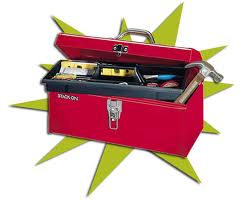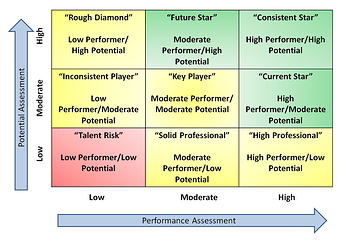
Recent discussions with several senior HR leaders and consulting partners has caused me to have a bit of concern about the use of the 9 box in the talent review and succession planning process. The 9 box can be a dynamic tool in driving the assessment and development of leaders. However, many organizations are using it in limited ways. Think about your answer to these questions:
- Is the 9 box chart in your company just a basic tool like the utility knife to help identify high potentials? or
- Is the 9 box chart a power saw that helps your company cut through subjectivity and drive the development of future leaders?
The 9 box chart or talent grid is a commonly used tool for examining talent within the organization and making talent decisions. The
9 box provides perspective or a way of looking at the relationship between the performance of individuals and their potential for the future. The placement of individuals in the 9 box chart is determined by ratings of performance and potential – both based upon a 3 point scale (i.e., Low, Moderate, High).

The 9 box can be a very helpful and visually appealing tool to use in the talent review and succession planning process .... but I don't think that we should be satisfied with helpful and appealing.
Most organizations use the 9 box to guide the identification of individuals who are considered to be high-potentials, successors for positions, and even individuals for whom a position change may be needed. The structure provided by the 9 box gives managers a way to think about their talent and make decisions.
The usefulness or the power of the 9 box really comes from the actions that take place once managers have used the tool to review their people. Unfortunately, my experience has shown me that organizations do not always take those vital next steps to unleash the power of the 9 box.
Open dialog and ownership. Once managers have made their ratings on performance and potential, and the results are presented on the 9 box for talent review, senior leaders must take the time to have open discussion around the assessment of individuals.
- Dialog within the team provides an opportunity to clarify and create a shared understanding of performance expectations among senior leaders.
- Candid discussion around individuals provides a more accurate assessment - offering multiple perspectives versus the perception of one manager.
Ideally, the senior team should come to agreement on the assessment of the talent pool and take ownership of the resulting action plans.
Framework for development. The 9 box provides direction on the types of development actions and investments that should be provided to individuals based upon their assessment. For example:
- Individuals in the top right quadrant should be prepared for future leadership positions through focused training and assignments.
- The performance management process should address individuals in the bottom left quadrant - taking steps to ensure performance is improved or a decision may need to be made to transition the individual out of the position/organization.
Organizations can create development plans to target the needs of individuals in each category. Dan McCarthy offers inght into appropriate development strategies for each 9 box category in his blog - www.greatleadershipbydan.com.
Please share your tips and experiences in using the 9 box in your company.
Click here to download this article.
Learn more about how viaPeople's innovative Succession Planning solution can help your company build talent for the future.
